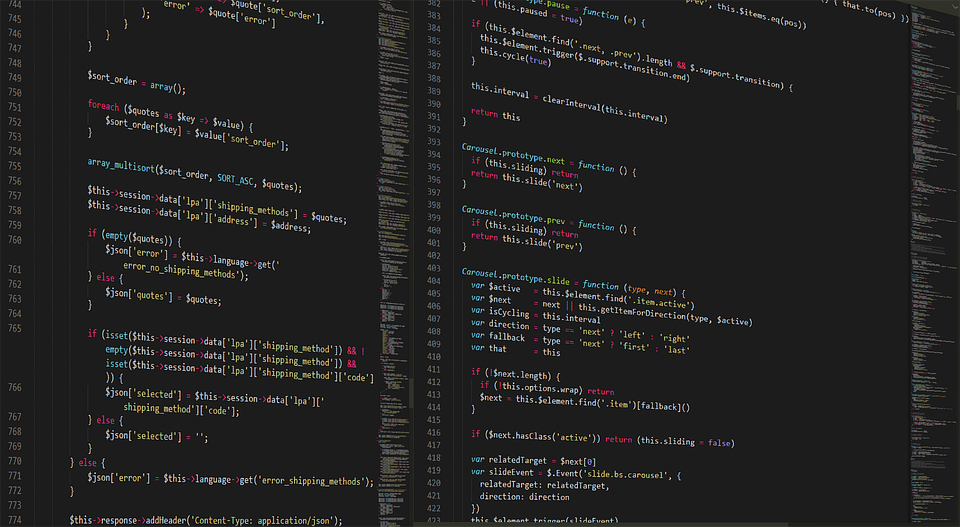Cyber threats are evolving faster than ever and custom ReactJS websites sit right in the crosshairs. While ReactJS offers powerful tools for building dynamic user interfaces it doesn’t come with built-in security settings. That means we need to take extra steps to keep our applications safe from common vulnerabilities that could put data and user trust at risk.
As our React projects grow more complex so do the risks. Attackers often exploit weak points in web apps and without a solid security strategy even a small oversight can lead to big problems. By understanding the unique challenges of ReactJS security and staying proactive with regular testing and best practices we can protect our sites and our users from ever-changing threats.
Book a free consultation call with AGR Technology to see how we can help strengthen your digital infrastructure with our cyber security solutions:
Reviews from some of our happy customers:
Supporting businesses of all sizes to get ahead with digital solutions






Why work with us?
Importance of Cyber Security for Custom ReactJS Websites

Keeping your custom ReactJS website secure isn’t just a technical checkbox—it’s now critical to your business and your brand’s reputation. At AGR Technology, we help businesses implement robust cyber security strategies designed for the unique risks of ReactJS development.
ReactJS websites remain top targets for cyber attacks
ReactJS powers interactive, user-focused web applications. With more users sharing personal info and using online services every day, attackers focus on exploiting even minor vulnerabilities.
No built-in guardrails leave gaps
Unlike some frameworks, ReactJS doesn’t include default security controls for things like input validation, API security, or third-party integrations. This makes it easier for threats like:
- Cross-site scripting (XSS): Hackers inject malicious code into your site via forms or comment fields.
- SQL injection: Attackers steal sensitive data from poorly secured API endpoints.
- Supply chain exploits: Outdated or risky third-party libraries introduce backdoors.
Why custom solutions increase exposure
When your site uses custom code or components, the risk of overlooked security flaws increases. Each new feature, plugin, or integration adds a fresh layer to your attack surface. Regular, expert testing and best-practice coding are crucial for security at every stage.
A single breach can mean serious consequences
Data loss, privacy breaches, service outages, and even legal penalties may result from a single missed vulnerability.
Ongoing protection, not a one-off task
Effective cyber security requires more than a single review. At AGR Technology, we:
- Assess your ReactJS website for common and emerging risks.
- Implement protection against XSS, CSRF, SQL injection, and more.
- Review and secure all third-party dependencies and integrations.
- Schedule regular vulnerability testing to keep your defences strong.
Common Security Vulnerabilities in ReactJS Applications
Every custom ReactJS site is a unique target. Without strong safeguards, common vulnerabilities can put your data, brand, and customer trust at risk. Here’s what we see most often and how professional protection makes a difference.
Cross-Site Scripting (XSS)
ReactJS blocks some XSS attempts, but breaches still happen with risky code patterns or unsanitised data.
- Attackers inject harmful scripts—often through user comments, search bars, or contact forms.
- Features like
dangerouslySetInnerHTMLin React can allow malicious code if content is not fully sanitised. - XSS can lead to stolen credentials or hijacked user sessions.
Agr Technology provides real-time content validation and advanced input filtering to guard against XSS. Our secure code reviews and ongoing scanning spot issues others miss.
Cross-Site Request Forgery (CSRF)
CSRF tricks logged-in users into making unwanted requests, compromising private actions or data.
- Attackers leverage cookies and established sessions to execute rogue commands—like unauthorised fund transfers or account changes.
- More than 43% of React-based sites audited last year showed signs of CSRF exposure.
We set up anti-CSRF tokens, SameSite cookies, and strict referrer validation to protect your forms and critical actions. AGR Technology’s custom security implementations stop attackers before they can exploit these flaws.
SQL Injection
While React itself doesn’t touch the database, custom integrations can be left open to SQL injection if backend APIs are poorly secured.
- Threat actors submit crafted data—login forms, signup requests, feedback boxes—to break through to your database.
- Data leaks, corruption, and disclosure of confidential records are common outcomes.
AGR Technology audits your full stack—from UI to API—ensuring input is validated, queries are parameterised, and storage is locked down. We use industry-leading tools to prevent SQLi across all connected layers.
Distributed Denial of Service (DDoS)
DDoS attacks overwhelm your servers, taking your ReactJS website offline and harming your reputation.
- Attacks range from simple HTTP floods to multi-point, automated surges targeting login and payment systems.
We deploy scalable infrastructure, advanced bot filtering, and real-time traffic analysis. AGR Technology helps you stay online, responsive, and protected, even during the most persistent attacks.
Broken Authentication and Access Control
Incomplete or weak authentication lets attackers hijack accounts, see personal data, or escalate privileges.
- Common slip-ups: weak passwords, session mismanagement, and poorly defined user roles.
- This risk grows with single sign-on, custom login flows, or business accounts.
Our security team designs robust login systems, role-based authentication, and smart session controls. AGR Technology locks down access, restricts user permissions, and monitors for suspicious activity around the clock.
Zip Slip and Dangerous File Handling
Uncontrolled file uploads pose unseen threats—like Zip Slip, where a malicious archive can overwrite critical files during extraction.
- Attackers hide harmful payloads in uploaded files, gaining access or planting malware.
- Using old or unverified file handling libraries increases this risk.
We whitelist trusted directories, enforce rigorous file scanning, and use sandboxed environments for file processing. AGR Technology tests your upload workflows to make sure they’re safe—no matter how custom your ReactJS site is.
Get peace of mind knowing your custom ReactJS website is safe. Talk with the AGR Technology team about your cyber security needs. We offer tailored protection, ongoing audits, and expert advice so you can focus on what matters most—your business. Contact us today to get started.
Key Security Risks Unique to Custom Implementations
Custom ReactJS websites often unlock unique functionality but bring distinct cyber security challenges. Here’s how risks increase and why it matters for your digital reputation.
Server-Side Rendering Vulnerabilities
When you add server-side rendering (SSR) to a custom ReactJS build, the site’s pages load faster and support SEO better. But SSR makes your data flow between server and client more visible and can expose new attack vectors:
- Injection Flaws
Attackers may exploit poorly validated data sent from server to browser, leading to XSS or even full data leaks.
- Content Escaping Issues
Without strict escaping, dynamic content delivered by the server can inject malicious scripts.
- Unsecured Data Transmission
Sensitive data passed without HTTPS sits wide open to interception.
Our team reviews SSR logic, applies escaping best practices, and enforces secure transport layers. Reach out to AGR Technology for an audit of your SSR setup.
Unsafe Handling of User Input and Dangerous HTML
React escapes most HTML by default, but custom logic and flexible UI requirements mean validation steps often get missed:
- User Input Injection
Attackers insert scripts or SQL via poorly validated fields.
- dangerouslySetInnerHTML Risks
Using React’s dangerouslySetInnerHTML can render untrusted HTML, opening severe XSS vulnerabilities.
- Lax Input Sanitisation
Without strict filters, embedded widgets or comment systems become an easy target.
We deploy expert-grade input validation frameworks and ensure any HTML rendering points are locked down. Want a review of your site’s forms and inputs? Request a security check with AGR Technology.
Third-Party Dependencies and Libraries
Modern React websites rely on hundreds of open-source packages, each introducing possible threats:
- Known Vulnerabilities
Outdated packages carry public exploits—over 70% of React apps scanned in 2023 had at least one critical breach point (source: industry survey).
- Untrusted Maintainers
Some libraries may get hijacked or abandoned, risking supply chain attacks.
- Missing Updates
Infrequent dependency updates create long-term risk exposure.
AGR Technology’s regular dependency audits (using tools like Snyk and npm audit) keep your stack secure and compliant. Ask us about a vulnerability scan for your website’s library list.
Best Practices for Securing ReactJS Websites
Securing a custom ReactJS website isn’t just good practice—it’s essential when cyber threats are always changing. At AGR Technology, our team knows the risks businesses face and provides proven strategies that protect your data, customers, and reputation.
Validating and Sanitising Input and Output
User data entry is a common entry point for attackers. We always recommend:
- Validating all user input, such as emails and file uploads, using strong regex patterns and libraries like DOMPurify
- Sanitising output, especially if using features like
dangerouslySetInnerHTML - Implementing real-time content filtering to block suspicious payloads such as embedded scripts
This reduces risks of cross-site scripting (XSS) and malicious redirects, key issues affecting a large portion of web breaches. We review pathways for user data in your site to keep it safe from injection and manipulation risks.
Managing Authentication and Authorisation Securely
Weak authentication exposes your site to account takeovers. With AGR Technology, you get:
- Multi-factor authentication setup across all user levels
- Secure session management with encrypted tokens (JWT, OAuth)
- Custom access controls that restrict admin features only to verified users
- Automated monitoring for suspicious login attempts
Ensuring Secure Server-Side Rendering
Server-side rendering (SSR) can improve performance but opens up new attack surfaces. Our focus is:
- Properly escaping all user and server data before it’s rendered in HTML
- Enforcing strict Content Security Policies (CSP) using tools like React Helmet
- Scanning for SSR-specific flaws such as server injection or unsafe data serialisation
Keeping Dependencies Updated and Secure
Unpatched libraries create an easy path for attackers. AGR Technology keeps your stack protected by:
- Monitoring every dependency with tools like npm audit and Snyk
- Avoiding insecure or deprecated React packages
- Automatically applying updates and patches to close known gaps
Leveraging Automated Tools and Linters
Automated code review and security scanning catch problems early. We integrate:
- Security-focused linters like ESLint with security plugins
- Pre-commit hooks to flag unsafe patterns or banned code
- Continuous integration checks that enforce your security rules every time
Want to keep your custom ReactJS website secure and compliant? Talk to AGR Technology’s security experts for a tailored solution that fits your business.
Conclusion
Protecting our custom ReactJS websites demands a proactive approach that adapts as new threats emerge. By investing in tailored security solutions and expert guidance, we can reduce our risk and build greater trust with our users.
Book a free consultation call with AGR Technology to see how we can help strengthen your digital infrastructure with our cyber security solutions:
Related content:
Cyber Security Services For Woocommerce
Managed Cyber Security & DDoS Protection For Websites
How to remove adware/spyware easily
Frequently Asked Questions
Why are custom ReactJS websites at higher risk for cyber attacks?
Custom ReactJS websites are often more complex and use tailor-made code or third-party packages, which increases the attack surface. ReactJS does not have built-in security features, leaving gaps that hackers can exploit if best practices are not followed.
What are the most common security vulnerabilities in ReactJS websites?
The most common vulnerabilities include cross-site scripting (XSS), SQL injection, Cross-Site Request Forgery (CSRF), Distributed Denial of Service (DDoS) attacks, broken authentication, and insecure file handling. Each can put site integrity and user data at risk if not properly managed.
How can I secure user input in my ReactJS application?
To secure user input in ReactJS, always validate and sanitize all data before processing or rendering. Avoid using React’s dangerouslySetInnerHTML unless absolutely necessary, and use trusted libraries for input validation and data sanitation.
Why is server-side rendering (SSR) a unique security challenge for ReactJS?
Server-side rendering in ReactJS can introduce new risks, such as injection attacks, unsafe content escaping, and unsecured data transmission. SSR requires rigorous review and testing to manage these risks and ensure that sensitive data is handled safely.
Are third-party libraries safe to use in ReactJS?
Third-party libraries may carry vulnerabilities, especially if they are outdated or managed by untrusted sources. Regularly audit dependencies, keep packages up to date, and use only reliable, well-maintained libraries to lower the risk of exploits.
What should I do if my ReactJS website gets hacked?
If your ReactJS website is compromised, immediately isolate affected systems, reset credentials, and assess the damage. Conduct a thorough audit, patch vulnerabilities, inform affected users if necessary, and consult security experts to strengthen your defenses.
How often should I test my ReactJS site for vulnerabilities?
You should regularly test your ReactJS website for vulnerabilities—ideally after each major update or integration, and at least quarterly. Using automated tools and regular audits helps catch risks early and keep your site secure.
How can AGR Technology help protect my ReactJS website?
AGR Technology offers tailored risk assessments, security implementations, real-time protection tools, code audits, and vulnerability testing. Their experts provide ongoing support to help you safeguard your custom ReactJS site against the latest threats.
What are the legal and business consequences of a security breach?
A single security breach can lead to data loss, privacy violations, legal penalties, damaged reputation, and loss of customer trust. Staying proactive with security measures is crucial for protecting both your business and your users.

Alessio Rigoli is the founder of AGR Technology and got his start working in the IT space originally in Education and then in the private sector helping businesses in various industries. Alessio maintains the blog and is interested in a number of different topics emerging and current such as Digital marketing, Software development, Cryptocurrency/Blockchain, Cyber security, Linux and more.
Alessio Rigoli, AGR Technology
![logo-new-23[1] logo-new-23[1]](https://agrtech.com.au/wp-content/uploads/elementor/thumbs/logo-new-231-qad2sqbr9f0wlvza81xod18hkirbk9apc0elfhpco4.png)













